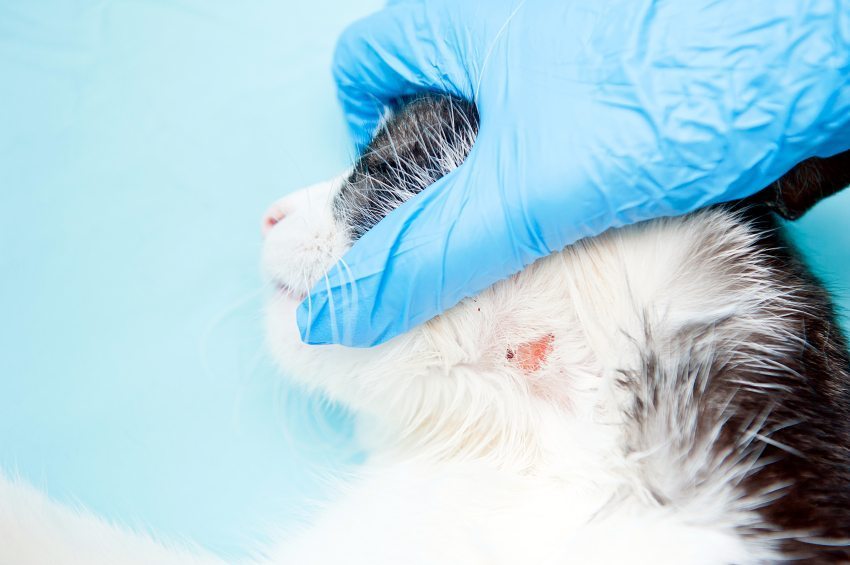
The Culprit
Believe it or not, the plastic cat food bowl you’ve been using for years could be the prime culprit in why your cat has chin acne. The reason is because plastic can be a dirt and bacteria magnet which then works its way up to the chin of your cat. The way to deal with this is to use only glass or metal bowls and wash them daily.
If you’re finding that stress is part of your cat’s malady, try to pinpoint the cause and eliminate it if you can. The reason for stress could be something as simple as changing the furniture configuration in your living room. You know how much cats hate change.
How it happens
Feline acne starts as an oily plug under the chin kind of like a blackhead on humans. It could turn into red, itchy bumps that become infected. Because feline acne can be difficult to get rid of, you will want to see your veterinarian as soon as possible after seeing black spots on her chin.
The Treatment
It’s possible that your vet may want to take some skin scrapings just to make sure it isn’t mange. Mild cases of feline acne may not even need treatment but still keep a close eye on your cat’s chin to make sure that the blackheads don’t progress into something more serious. Daily cleaning with an antibiotic soap followed by a topical ointment will help. And, whatever you do, don’t try to squeeze black spots on a cat like you squeeze your own blackheads.
If feline acne is diagnosed as a food allergy, your vet may suggest you change her food to one that is grain free.
If it appears that your cat is having intermittent bouts of acne, try swabbing her chin with a cotton ball dipped in hydrogen peroxide once a week to see if that controls the flare ups.
Photo Credit: istockphoto.com